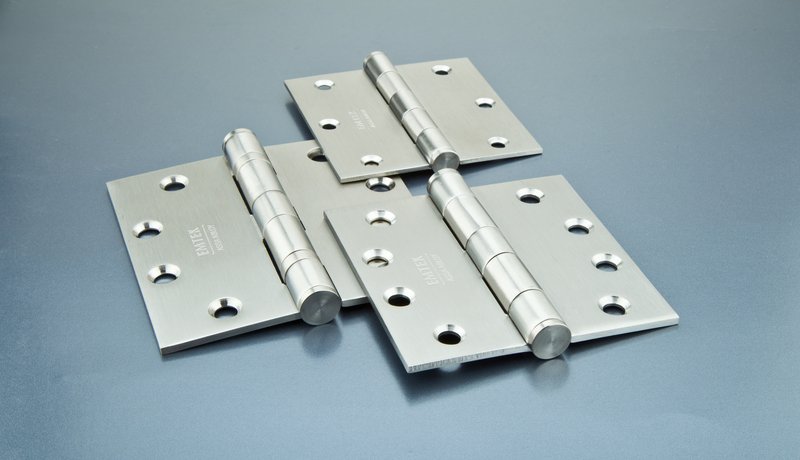Hinges are essential components that allow doors, gates, windows, and furniture to function smoothly. However, over time, hinges can wear out due to friction, exposure to weather, or constant use. Proper maintenance is key to ensuring your hinges last longer, remain functional, and operate smoothly. In this blog, we’ll share practical tips for maintaining your hinges to ensure their longevity.
Why Hinges Need Maintenance
Hinges work by allowing two objects to pivot or rotate around a fixed point. This constant motion can cause wear and tear, especially if the hinge is exposed to dirt, moisture, or heavy use. Regular maintenance not only keeps hinges in good condition but also prevents problems like squeaking, sticking, or complete failure.
By taking a few simple steps to care for your hinges, you can extend their lifespan, reduce noise, and ensure smooth operation for years to come.
Regular Cleaning and Lubrication
Cleaning Hinges
Hinges collect dust, dirt, and grime over time, which can increase friction and wear. Cleaning your hinges is an essential part of regular maintenance.
- Why Clean? Dirt and dust can cause hinges to become stiff and wear out faster. A clean hinge operates more smoothly and lasts longer.
- How to Clean: Use a damp cloth to wipe away dirt and debris from the hinge. For deeper cleaning, use a small brush (like an old toothbrush) to get into the crevices. Be gentle to avoid damaging the finish.
Lubricating Hinges
Lubrication is crucial for ensuring smooth movement and preventing rust. Without proper lubrication, hinges can start to squeak, stick, or wear out prematurely.
- Why Lubricate? Lubrication reduces friction, prevents rust, and helps hinges open and close smoothly.
- What to Use: WD-40, silicone spray, or even petroleum jelly are good options for lubricating hinges. Avoid using too much oil, as it can attract dust.
- How Often to Lubricate: Depending on the hinge’s exposure to wear (for example, exterior doors versus interior ones), lubricating once every six months to a year is typically sufficient.
Check for Wear and Tear
Over time, hinges can become damaged due to constant movement or exposure to harsh conditions. Regularly checking for signs of wear will help prevent minor issues from becoming bigger problems.
- Signs of Damage: Look for rust, cracks, or bending. If a hinge is loose or misaligned, it may not function properly.
- What to Do: If you spot rust, gently clean the area and apply a rust remover before reapplying lubricant. If the hinge is damaged or bent, it may need replacing to avoid further damage.
Tighten Screws and Bolts
Loose screws or bolts can cause hinges to become misaligned or even break over time. Regularly tightening these components is an easy way to maintain the hinge’s functionality.
- Why Tighten? Loose screws can result in a misaligned door, causing unnecessary strain on the hinge.
- How to Tighten: Use a screwdriver to tighten the screws, but be careful not to over-tighten as it can strip the threads or damage the hinge.
Prevent Rust and Corrosion
Metal hinges, especially those exposed to outdoor elements, are prone to rust and corrosion. Protecting your hinges from moisture will prolong their life.
- Why Prevent Rust? Moisture can cause metal hinges to rust, which leads to squeaking, sticking, and eventually failure.
- How to Protect: Use rust-resistant hinges made of stainless steel, brass, or galvanised materials. For added protection, apply a rust inhibitor or clear sealant to prevent moisture buildup. Regularly wipe outdoor hinges to keep them dry and free from debris.
Regularly Test the Hinges
A simple way to spot issues early is by testing the hinges regularly. Open and close the door, gate, or window to check for smooth movement.
- Why Test? Early detection of problems, such as squeaking or resistance, can help you address minor issues before they become major.
- How to Test: If the door doesn’t swing easily, or you notice uneven movement, it may be time to clean, lubricate, or replace the hinge.
How to Fix Squeaky Hinges
Squeaky hinges are a common issue, and they’re usually a sign that the hinge needs lubrication. Here’s how to fix them:
- Clean the Hinge: Remove any dirt or debris from the hinge using a brush or cloth.
- Lubricate the Hinge: Apply a small amount of lubricant (WD-40, silicone spray, or petroleum jelly) to the hinge.
- Work the Hinge: Open and close the door several times to distribute the lubricant and reduce friction.
If squeaks persist, check for wear or damage, and replace the hinge if necessary.
Final Words
Maintaining your hinges is a simple yet essential task that ensures longevity and smooth operation. Regular cleaning, lubrication, and checking for wear will keep your hinges functioning well and prevent costly repairs or replacements. Whether you’re maintaining exterior doors, gates, or cabinets, taking care of your hinges will enhance their performance and extend their lifespan.
By following these tips, you can keep your hinges in top shape and enjoy quiet, smooth door operation for years to come.
